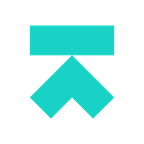Snipply was built on successfully working with freelance teams — And we quickly learned that the proposal itself is really important as it is the next step beyond your profile that will get you hired for the gig. It shows that you understand what your client needs and is asking for, and it highlights how you are the exact person for the job.
While proposals for different types of jobs will be different, there are a few basic sections and points to highlight, along with some tips of the trade to keep in mind while putting together a proposal that is sure to get you the job.
First, Summarize the project back to the potential client — this shows that you understand what is needed to be done, but it is also a great place to clarify exactly what will be done and what you are going to go through in the rest of the proposal. Your client’s problem is the number one thing they have in mind when they start going through proposals, so presenting it back to them with a sense of clarity is incredibly important when starting the proposal.
Estimate the cost clearly— This obviously changes based on the type of work. Is this one project or ongoing work like a virtual assistant gig? Is this an hourly rate or a one-time project fee? Carefully think through what needs to be here and make sure to be as detailed as possible. Depending on the work being done, you can add in options here, or present different packages. In sales, we often like to present three different options representing a low-end, medium and high-end price point. Generally speaking, you want to make the medium and high-end price points the most attractive to the client.
Outline your process and timeline — This is so incredibly important but often overlooked. If the process isn’t outlined and agreed upon, and a timeline isn’t presented in absolute clarity than the entire project could go south. The goal here is to have the project be as smooth as possible — even if it is a one-time project you’ll want a good review, recommendation, and an open door for potential future projects. This is the first step in avoiding miscommunication resulting in unhappy clients popping up in the middle of a project.
Provisions, revisions, and payment — This is pretty simple. You need to outline any types of revisions that can be made, different provisions, and how/when payment is expected. Being concise is key here.
With those being the core components, there are a few things to keep in mind as you flesh out the entirety of the proposal — and these are applicable for everything from graphic design work and product development to goal-oriented projects like sales and marketing work.
Your client is the foundation of the proposal — Your potential client is the one with a very specific need and/or goal. They need help in a specific area and they need whoever it is helping them to completely understand their needs. You need to demonstrate a core understanding of their problem in order for them to take your proposal seriously. Not only should you focus on demonstrating your knowledge of their problem or needs, but you can go deeper into understanding them specifically — whether it is the team or company itself, their business and competition, or their long-term goals and how this project fits in both short-term and in the future.
Make yourself the obvious choice by showcasing your strengths & skill-set — Depending on the type of work, sections like “About Me”, relevant resume and past projects, portfolio, etc. are all relevant. Include testimonials from related past clients and present yourself in a way that makes it seem like you are the obvious candidate.
Brief is best — The longer something is the less likely it is to actually be read. Where you can, use bullets, illustrations and graphics, and other ways to convey large amounts of information in short spaces. The best proposal is rarely the longest proposal.
If not a designer, find a template — Nothing makes you seem less appealing then sending someone a basic Word doc. If not a designer, use a template that will set you apart — We’ll be publishing a series of templates to use so make sure to sign up for Snipply to receive a notification when they are up.
Be timely — If you get questions you need to answer them, quickly and thoroughly. You will never get hired if there are already questions on your ability to get things done on time.
If interested in taking a deeper dive head over to Snipply’s blog where we’ll be publishing a full guide for both freelancers and those looking to build a freelance team. And if interested in tools to make your world in freelancing easier, check out Snipply’s beta here.
Suffering from editor fragmentation and collaboration headaches resulting from it? Love using Excel but hate Sheets? Want to put an end to your team’s friction over Office and G Suite? Join our waitlist here.
